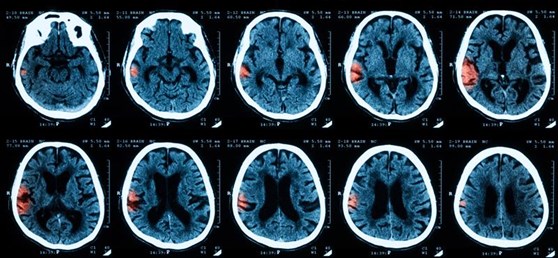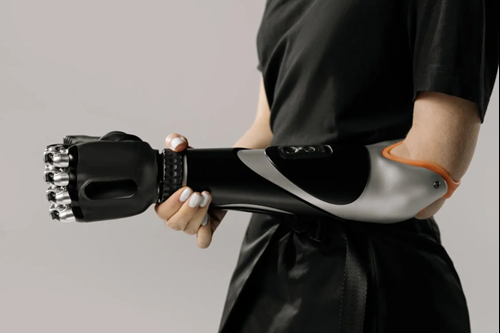AI in Neuroscience: Science-Fiction or Reality?
Written by Daniel Doyon, PhD student at Karolinska Institutet in Stockholm
Artificial Intelligence (AI) can be defined as the emerging scientific field concerned with developing computer models which simulate human intelligence by using machine learning to gain the ability to problem-solve and make decisions. Large language models (LLMs), such as ChatGPT, are AI-based software which can process information, generate text, and even dialogue with the human user, and these tools are rapidly changing the way people work and find information. Neuroscience is the collective study of the human nervous system, which aims to understand the brain’s biological organization, study its functions, and better understand and treat its disorders. These two fields are naturally intertwined, as neuroscience inspired the development of AI, but as AI models and computational power become more robust, they can now help our understanding of neuroscience dramatically. This article will cover some of the current applications of AI to study the brain, as well as to help diagnose neurological diseases, and discuss the inevitable hurdles that line the way to fully integrate artificial intelligence into neuroscience.
AI helps brain-computer interfaces
Brain-computer interfaces (BCI) are systems that enable direct communication between a living human brain and an external computing device. One application is robotic prosthetics, which receive signals from an amputee’s nervous system, analyze them, and convert them into electronic commands that control mechanical limb movements. AI has revolutionized BCI performance by amplifying the signals, typically derived from electroencephalography (EEG), and filtering out noise [1]. As a result, BCI use in medical devices has become much more effective in restoring mobility in individuals with disabilities.
Photo by cottonbro from Pexels
Simulation of neural systems with AI
AI programs are being used to simulate models of neural circuitries, unlocking a wide potential for studying the brain from a regional neurotransmission scope all the way down to a molecular and even genetic scale [2]. By mimicking neuronal systems in silico, computational neuroscientists can run thousands of biological systems in significantly less time than traditional laboratory methods allow [3]. Furthermore, applying machine learning to these systems can enhance and refine data output as the models develop.
Using computer-powered neural models offers several advantages over traditional biomedical research techniques, such as:
-
Reducing the number of animals used in research
-
Significant reduction of the financial cost of neuroscience research
-
Improved safety considerations and control over experimental error
-
Faster development of new therapies and drugs for neurological diseases
Despite these advantages, the application of in silico experiments in neuroscience does have important pitfalls. Although they may be robust, these models will not be as physiologically accurate as living cells, and potential discoveries or novel drug candidates will still require strenuous biological testing before they can be applied clinically. There are also concerns about the energy burden and environmental impact that widespread application of such technologies may create. Nevertheless, computational models powered by AI stand as a promising tool for future neuroscience research.
Analyzing neural imaging with learning models
Brain scanning modalities, such as magnetic resonance imaging (MRI) and positron-emission tomography (PET), are invaluable tools for diagnostics and translational research on brain function and disease [4]. However, the inherent complexity and subtlety of a single brain scan can make it challenging for clinicians to accurately assess neurological conditions [5]. AI learning models are starting to study libraries of previous diagnostic cases and analyze huge amounts of data in extremely fine detail. These models can then recognize patterns in the images and better identify lesions or abnormal activity, which can help confirm diagnoses and predict the best treatment avenues on a patient-to-patient basis. Deep neural networks have been implemented to speed up acquisition of MRI data, enhance signal-to-noise ratio (SNR) and resolution, reconstruct and register brain images, and even optimize radiation dosage for advanced processes like theranostic CT scanning [6, 7, 8].

AI-based brain imaging software in development. Machine learning analysis of CT-scans predicts a lesion from patient data very quickly, with high accuracy.
AI is improving diagnosis of specific disorders
Machine learning models have started to be applied in clinical context to improve in diagnosis of neurological conditions. The repertoire of data available for teaching recognition models is growing, enabling more robust and accurate systems. Modalities being used to identify pathologies in patients are coming from a variety of different sources, including MRI and PET scans, as well as histology and microscope analysis, EEG recordings, self-reported and interview data, genetic sequencing information, and even behavior and gait analysis from filmed video.
In clinical settings, neurology patients are being recorded, and the footage is analyzed by AI software to assess their gait, facial expression, and speech of neurology patients to detect early signs of Parkinson’s disease, potentially identifying subtle movement differences that would be missed by the naked eye of a physician [9]. This same approach can be used to assess speech disorders, psychiatric conditions like autism spectrum disorder (ASD,) and other movement disorders like dystonia [10].
AI can also help in identifying cell-type specific lesions from biopsy samples, detect patterns in EEG recordings from sleep disorders like narcolepsy, and make more informed predictions of psychiatric diagnoses when many symptoms overlap, for example, in the cases of bipolar disorder and schizophrenia [11, 12]. However, many of these applications are still in the conceptual stages, and widespread application of such AI-assisted diagnostic tools will require more rigorous testing to ensure safety, accuracy, and reliability across diverse patient populations before arriving in clinic.
Challenges and pitfalls in applying AI to neuroscience
Although the promise of AI in improving neuroscience is exciting, there are several barriers currently in the way of widespread integration into research and clinical settings.
-
Firstly, there is a lack of standardized protocols, data-sharing platforms, and reproducibility across research groups that will be needed to make AI-based methods safe and effective. An improved system of unified result sharing would be needed to properly access the potential of AI to improve neuroscience research.
-
In addition, clinicians would need to learn to apply AI in a clinical setting, as medical doctors lacking the computational background will naturally face a learning-curve and intrinsic apprehension to trust computers in predicting appropriate patient care.
-
Finally, a legal framework will need to be developed around ethics and accountability for use of AI in clinical neuroscience and will need to be implemented long before AI becomes the new golden standard in neurology.
Therefore, we’re still far away from having robots for neurologists or from using computer chips instead of neuronal cell cultures.
Proteintech products to keep your neuroscience research moving forward:
-
FlexAble 2.0 Antibody Labeling Kits (KFA025) - for labeling members of the same neural protein family, like Trk A, B, and C receptors
-
ChromoTek Nano-Traps - for quantifying low-abundance brain proteins like BDNF
-
NeuN Polyclonal Antibody (26975-1-AP) - labels neurons and produces sharp images of brain tissue
-
IHCeasy IBA1 IHC Kit (KHC0056) - a simple, all-in-one kit to visualize activated microglia and study neuroinflammation
References
-
Shih, J.J., Krusienski, D.J., and Wolpaw, J.R. Brain-Computer Interfaces in Medicine. Mayo Clinic Proceedings. 2012;87:268–279. doi: 10.1016/j.mayocp.2011.12.008.
-
Dias, R. and Torkamani, A. Artificial intelligence in clinical and genomic diagnostics. Genome Medicine. 2019;11:70. doi: 10.1186/s13073-019-0689-8.
-
Markram, H. The Blue Brain Project. Nature Reviews Neuroscience. 2006;7:153–160. doi: 10.1038/nrn1848.
-
Zhu, G., Jiang, B., Tong, L., Xie, Y., Zaharchuk, G., and Wintermark, M. Applications of Deep Learning to Neuro-Imaging Techniques. Frontiers in Neurology. 2019;10:869. doi: 10.3389/fneur.2019.00869.
-
Fitzgerald, R. Error in Radiology. Clinical Radiology. 2001;56:938–946. doi: 10.1053/crad.2001.0858.
-
Liang, N. MRI Image Reconstruction Based on Artificial Intelligence. Journal of Physics : Conference Series. 2021;1852:022077. doi: 10.1088/1742-6596/1852/2/022077.
-
Dong, C., Loy, C.C., He, K., and Tang, X. Image Super-Resolution Using Deep Convolutional Networks. IEEE Transactions on Pattern Analysis and Machine Intelligence. 2016;38:295–307. doi: 10.1109/TPAMI.2015.2439281.
-
McCollough, C.H. and Leng, S. Use of artificial intelligence in computed tomography dose optimisation. Annals of the ICRP. 2020;49(Suppl. S1):113–125. doi: 10.1177/0146645320940827.
-
Orimaye, S.O., Wong, J.S.-M., and Golden, K.J. Workshop on Computational Linguistics and Clinical Psychology: From Linguistic Signal to Clinical Reality. Association for Computational Linguistics; Baltimore, MD, USA: 2014. Learning Predictive Linguistic Features for Alzheimer’s Disease and related Dementias using Verbal Utterances; pp. 78–87.
-
Heinsfeld, A.S., Franco, A.R., Craddock, R.C., Buchweitz, A., and Meneguzzi, F. Identification of autism spectrum disorder using deep learning and the ABIDE dataset. NeuroImage: Clinical. 2018;17:16–23. doi: 10.1016/j.nicl.2017.08.017.
-
Jaiswal, A.K. and Banka, H. Local pattern transformation based feature extraction techniques for classification of epileptic EEG signals. Biomedical Signal Processing and Control. 2017;34:81–92. doi: 10.1016/j.bspc.2017.01.005.
-
Chen, H., Song, Y., and Li, X. Use of deep learning to detect personalized spatial-frequency abnormalities in EEGs of children with ADHD. Journal of Neural Engineering. 2019;16:066046. doi: 10.1088/1741-2552/ab3a0a.
-
Au Yeung, J, Wang, Y.Y, Kraljevic, Z, and Teo, J.T.H. Artificial intelligence (AI) for neurologists: do digital neurones dream of electric sheep? Practical Neurology. 2023;23(6):476-488. doi:10.1136/pn-2023-003757.
Related Content
AbleAI: Our AI-powered search tool
Support
Newsletter Signup
Stay up-to-date with our latest news and events. New to Proteintech? Get 10% off your first order when you sign up.


